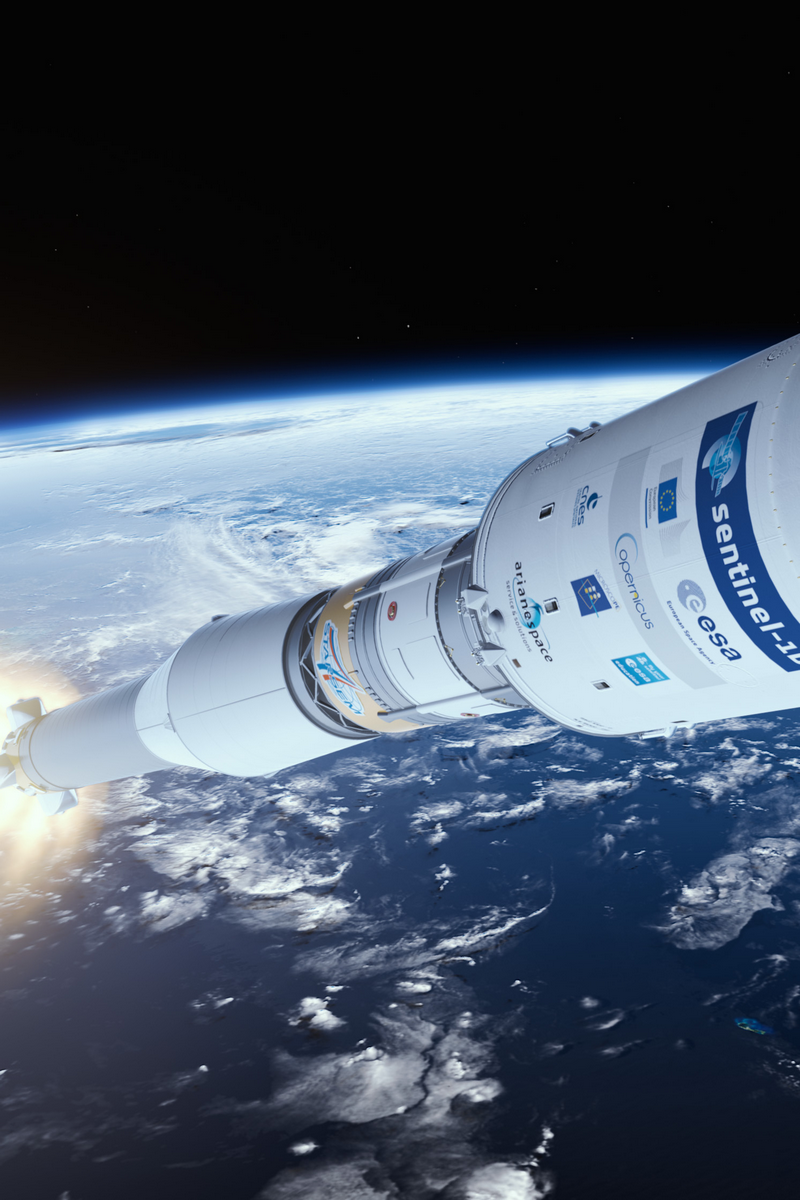Science & Technology / Space
Date
Mon, Apr 25 2016 5:40 PM ART — Mon, Apr 25 2016 10:30 PM ART
About
Following a 24-hour delay due to a technical anomaly observed during the countdown on 24 April, which has now been resolved, the launch of Soyuz flight VS14 carrying Sentinel-1B is now planned for Monday, 25 April, at 23:02 CEST/21:02 UT
CubeSat launch replay
Replay of the CubeSat launch coverage from Europe’s Spaceport in French Guiana. Three CubeSats took advantage of the Soyuz rocket carrying the Sentinel-1B satellite into orbit on 25 April 2016. These small satellites, each measuring just 10×10×11 cm, were developed by teams of university students through the ‘Fly Your Satellite!’ programme, run by ESA’s Education & Knowledge Management Office in close collaboration with European universities. The three CubeSats are: OUFTI-1 from the University of Liege, Belgium, e-st@r-II from the Polytechnic of Turin, Italy, and AAUSat-4 from Aalborg University, Denmark. The rocket also carried Microscope from the French space agency, CNES.
Sentinel-1B launch replay
Replay of the Sentinel-1B launch coverage from Europe’s Spaceport in French Guiana. The second satellite in the Sentinel-1 mission lifted off on a Soyuz rocket on 25 April 2016 at 21:02 GMT (23:02 CEST) to provide ‘radar vision’ of Earth for Europe’s environmental Copernicus monitoring programme. As well as liftoff and acquisition of the signal indicating that Sentinel-1B has been delivered into orbit safely, the coverage also includes talks by experts highlighting the goals and benefits of this second Sentinel-1 satellite. Sentinel-1B joins its identical twin, Sentinel-1A, in orbit to deliver information for numerous services, from monitoring ice in polar seas to tracking land subsidence, and for responding to disasters such as floods. The launch of Sentinel-1B also provided an opportunity to give other smaller satellites a ride into space: three CubeSats developed by university students through ESA’s ‘Fly Your Satellite!’ programme and Microscope from the French space agency, CNES.
Sentinel-1B lifts off
Sentinel-1B lifted off on a Soyuz rocket, flight VS14, from Europe’s Spaceport in French Guiana on 25 April 2016 at 21:02 GMT (23:02 CEST). With the Sentinel-1 mission designed as a two-satellite constellation, Sentinel-1B will join its identical twin, Sentinel-1A, which was launched two years ago from Kourou. Both satellites carry an advanced radar that images Earth’s surface through cloud and rain regardless of whether it is day or night. By orbiting 180° apart, global coverage and data delivery are optimised for the environmental monitoring Copernicus programme. The mission provides radar imagery for a multitude of services and applications to improve everyday life and understand our changing planet. Three CubeSats piggybacked a ride on Soyuz. These small satellites, each measuring just 10×10×11 cm, have been developed by university student teams through ESA’s Fly Your Satellite! effort. The other passenger is the Microscope satellite from France’s CNES space agency
Sentinel-1B ready for orbit
After Sentinel-1A, last 3 April 2014, Sentinel 1B will be launched next 22 April on a Soyuz rocket from Europe’s Spaceport in French Guiana. The Sentinels, a new fleet of ESA satellites, are poised to deliver the wealth of data and imagery that are central to Europe’s Copernicus programme. By offering a set of key information services for a broad range of applications, this global monitoring programme makes a step change in the way we manage our environment, understand and tackle the effects of climate change, and safeguard everyday lives. The first in the series, Sentinel-1 carries an advanced radar instrument to provide an all-weather, day and night supply of imagery of Earth’s surface. Sentinel-1 is the result of close collaboration between the ESA, the European Commission, industry, service providers and data users. Designed and built by a consortium of around 60 companies les by Thales Alenia Space and Airbus Defence and Space, it is an outstanding example of Europe’s technological excellence
.
http://www.esa.int
No hay comentarios:
Publicar un comentario